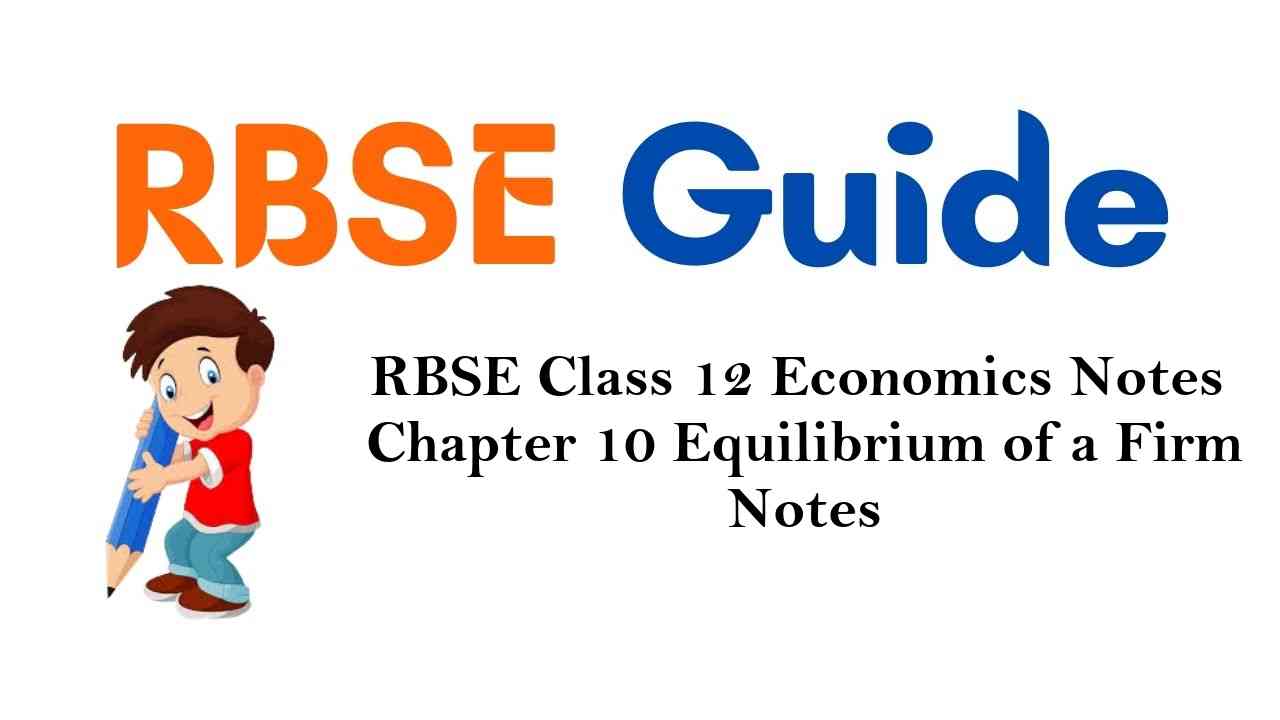Rajasthan Board RBSE Class 12 Economics Notes Chapter 10 Equilibrium of a Firm
A firm is said to be in equilibrium when it has neither the tendency to increase, nor to reduce its level of output. At this output level, it maximizes its profits.
To stabilise the profit of a firm, its revenue and cost should be known.
When the revenue of a firm exceeds its cost, it earns profit.
When the revenue of a firm is less than its cost, it suffers loss.
In economics, there are two methods of explaining the equilibrium of the firm –
- Total revenue – Total Cost method
- Marginal revenue – Marginal Cost method
Total Revenue- Total Cost Approach method is one, which tries to find profit-maximizing output by comparing total revenue and total cost at different levels of output. The profit- maximizing level of output is one, at which the difference between total revenue and total cost is the largest.
Marginal Cost Approach method tries to find equilibrium level of output by comparing marginal revenue and marginal cost of additional units of output. A firm is in equilibrium or its profits are maximum at the level of output at which marginal revenue equals marginal cost of output (MR = MC).
In MR – MC method, there are two conditions of equilibrium –
MR = MC, and
MC curve must cut MR curve from below.
The drawbacks of Total Revenue – Total Cost method are –
![]()
It is difficult to determine the maximum distance between TR and TC, since many tangents have to be drawn to arrive at the right point, which is a problem.
The per unit price cannot be determined with the help of the figure. Prices are not indicated directly.
The MR = MC method is better than TR = TC method, as maxium profit and optimum output can easily be determined by it.
These methods of equilibrium of firm are used in all types of markets.
Analysis of firm’s equilibrium is very useful for production and the producer.
Break-even for a firm occurs when it is able to cover its all costs of production. Accordingly, break-even point is defined as a situation when TR = TC or TR/Q or AR = AC.
Shut down point occurs when a firm is just able to cover its variable cost, incurring the loss of fixed cost of production. Accordingly, shut-down point is defined as a situation when TR = TVC or TR/Q = TVC/Q or AR = AVC.
![]()
Important Glossary
- Marginal Cost – Marginal cost is additional cost incurred in the production of one additional unit of a good or service.
- Equilibrium of a firm – Equilibrium indicates a situation in which there is a complete adjustment to the operation of different forces and there is no temptation to change the output or the price.
- Marginal Revenue – Marginal revenue means the addition made to the total revenue by selling an additional unit of output.
